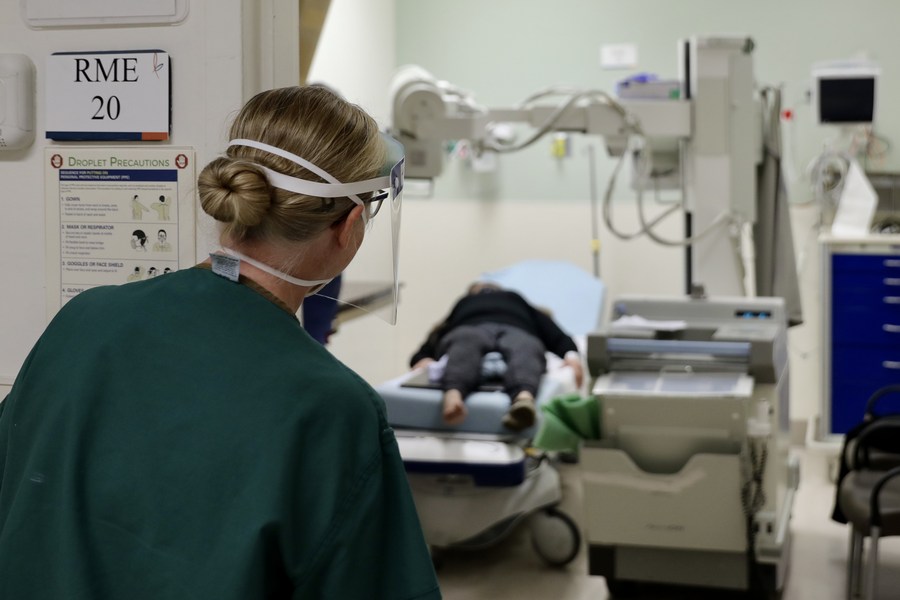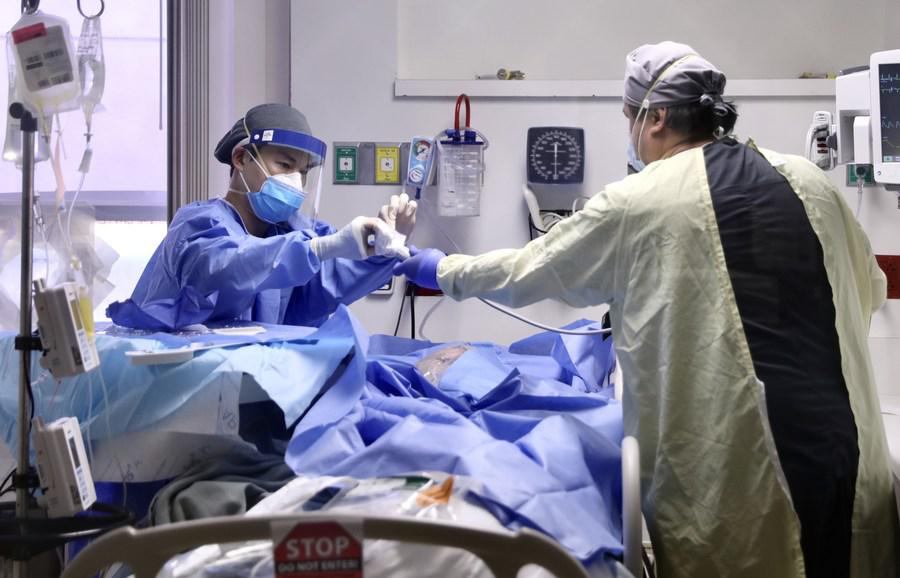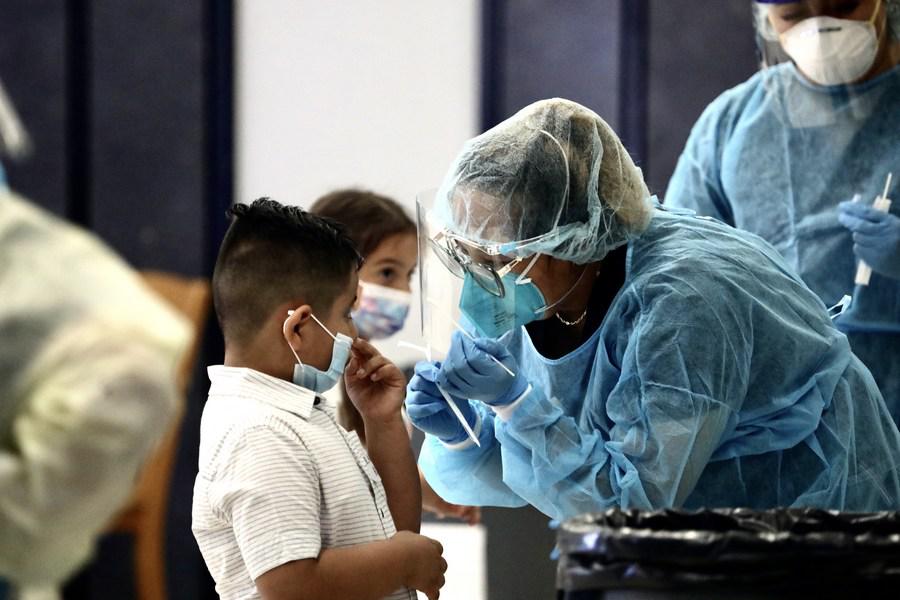U.S. overwhelmed with rising COVID-19 patients, alarmed schools after Labor Day

A healthcare worker watches a patient in the "COVID Area" of the Beverly Hospital in Montebello City, California, the United States, Jan. 22, 2021.(Xinhua)
The rise in hospital admissions for COVID-19 patients is straining resources in many states. Hospitals in Florida and Mississippi have said in recent weeks that they are running out of ICU beds, which also affects patients who need other kinds of health care since the facilities don't have the space or staff to treat them.
NEW YORK, Sept. 7 (Xinhua) -- COVID-19 is unlikely to be going away completely in the United States, an expert has warned, as the country remains burdened with surging cases, rising deaths, occupied hospital ICUs and alarmed schools right after Labor Day.
"It is really important that we convey that success does not equal no cases. Success looks like very few people in the hospital and very few dying," U.S. Surgeon General Vivek Murthy said in a recent interview with Politico.
The continued increase in COVID-19 cases over Labor Day weekend forced many Americans to change or cancel plans, bringing what began as an optimistic summer to an end on a decidedly somber note. "This is obviously a very difficult part of the pandemic," Murthy said.
HOSPITALS STRAINED
The number of COVID-19 patients in hospitals in the United States has more than doubled since last Labor Day, a sobering statistic that illustrates how the Delta variant has hampered progress in curbing the pandemic even as vaccines became widely available, reported The Washington Post on Tuesday.
There were 38,192 people in hospitals with the virus last Labor Day, on Sept. 7, 2020, at a time when the promise of a vaccine rollout was still a few months away. This figure has skyrocketed to 99,270 by Sept 6. 2021, a 160 percent increase, according to the report.
The rise in hospital admissions for COVID-19 patients is straining resources in many states. Hospitals in Florida and Mississippi have said in recent weeks that they are running out of ICU beds, which also affects patients who need other kinds of health care since the facilities don't have the space or staff to treat them.

Healthcare workers operate in an ICU in the "COVID Area" of the Beverly Hospital in Montebello City, California, the United States, Jan. 22, 2021. (Xinhua)
In the meantime, the seven-day average of confirmed cases of the pandemic stood at 132,135 nationwide on Monday, with its 14-day change striking a 12-percent fall. COVID-19-related deaths were 1,385 on Monday, with the 14-day change realizing a 31-percent rise, according to The New York Times.
Equally worrisome, reported Forbes on Tuesday, 21 states have yet to reach the goal U.S. President Joe Biden set for the United States to having 70 percent of adults at least partially vaccinated against COVID-19, even though the country surpassed the milestone in August, but an uptick in inoculations is bringing many places closer.
Furthest from the target Biden initially set for Independence Day are West Virginia, Wyoming, Mississippi and Idaho, which have all partially vaccinated less than 60 percent of adults. Another 10 states yet to crack a 65 percent vaccination rate are North Dakota, Tennessee, Alabama, Louisiana, Indiana, South Carolina, Montana, Georgia, Ohio and Missouri.
SHORTAGE OF TEACHERS, NURSES
School districts across the country have been struggling with dwindling staff numbers after teachers left the profession amid coronavirus lockdowns last year, and now, as Delta infections spike, reported Business Insider on Sunday.
Those factors, coupled with more full-time teachers testing positive for COVID-19, have led to an increased demand for substitute teachers, which are also now in critically short supply in many districts, according to the report.
Districts in Georgia, California, Florida, Idaho and other states are struggling to fill their substitute teacher rosters. Some are even offering more money and perks in what is typically a low-paid and inconsistent job, it added.

A student of Montrara Ave. Elementary School has a COVID-19 test in Los Angeles, California, the United States, on Aug. 16, 2021. (Xinhua)
Meanwhile, the United States is grappling with a shortage of school nurses. Pandemic aside, the U.S. Centers for Disease Control and Prevention recommends that schools have one full-time nurse for every 750 students.
"Now, when students and schools may need nurses more than ever, it's estimated that about a quarter of schools still have no nurse at all," reported CNN on Monday, adding that the country has had a shortage of school nurses for years, but the burden is clear now.
The latest data from a national school nurse workforce study, published in the Journal of School Nursing in 2018, found approximately 39 percent of U.S. schools employ full-time nurses and about 35 percent employ part-time school nurses, while 25 percent do not employ school nurses.
Photos
Related Stories
Copyright © 2021 People's Daily Online. All Rights Reserved.










